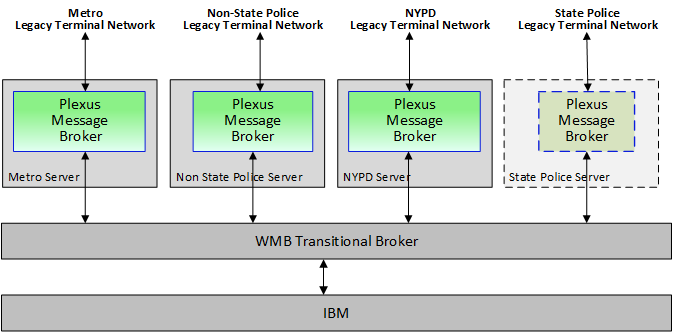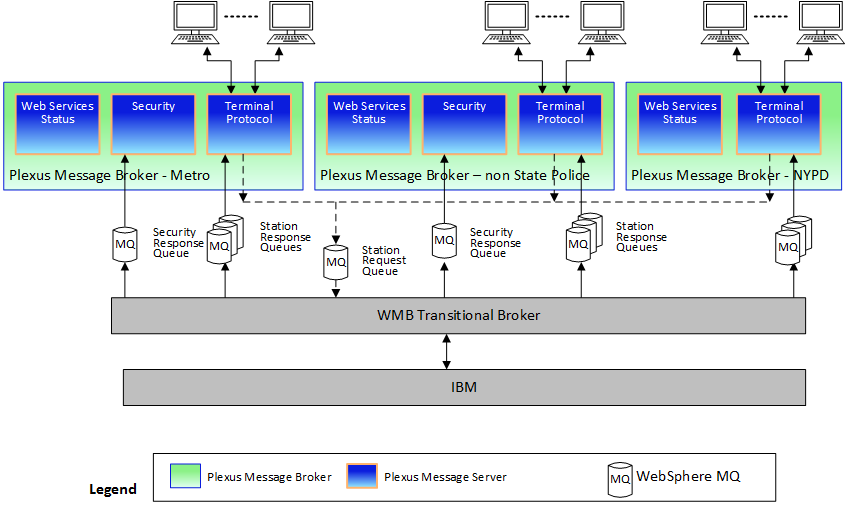Legacy Terminals
Technical Summary
- Healthcare
- Emergency Services
- Justice/Law Enforcement
- Unemployment Benefits
- Legacy Terminals
- Mgmt. Summary
- Technical Summary
- Public Safety
 This Plexus Message Broker solution features the following technology: Legacy terminals, role-based security access, WebSphere® MQ, and message format translation. This solution’s site and Plexus Message Broker configurations touch on these features below.
This Plexus Message Broker solution features the following technology: Legacy terminals, role-based security access, WebSphere® MQ, and message format translation. This solution’s site and Plexus Message Broker configurations touch on these features below.
Site Configuration
The Plexus Message Brokers are intended as an interim solution that allows the site’s main application to be converted and at the same time delay the conversion of the terminal network. As illustrated below, this site is comprised of three active Plexus Message Brokers. The State Police Plexus Message Broker was no longer needed once the application implementation was completed and the State Police updated their terminal network. The dependency on the remaining message brokers will be eliminated once the other terminal networks are migrated.
As with all Plexus Message Broker installations, adding physical servers, increasing Plexus Message Brokers instances per physical server, or transitioning to run the Plexus Message Broker in a virtual (VM) environment is only a matter of installation and configuration. No other Plexus Message Broker modifications are necessary. Resources are typically added for performance reasons, local redundancy reasons, or both.
At this particular site, the acceptable down time for the Plexus Message Broker with respect to the Legacy Network Terminals is well within the time it takes to swap in the hot stand-by. Hence, this very simple configuration is suitable.
Plexus Message Broker Configuration
The configuration of the Plexus Message Brokers for the three agencies are generally the same. As illustrated below all include Web Services Status and Terminal Protocol Message Brokers, and with the exception of the NYPD Message Broker, support electronic security updates.
Plexus Message Server Functions
| Message Server | Function |
| Web Services Status | Allows the police agency to get real time updates on the performance metrics of their individual systems: Receives Web Services HealthCheck requests from in-network customized user interfaces; determines the flow rates of the Terminal Protocol Message Handler as well as the status of particular terminals; sends back the response as part of the Web Services call |
| Security | Supports electronic security updates: Receives Web Services message to change user security or terminal interfaces. Changes are immediate and made to both in-memory tables and disk tables. |
| Terminal Protocol | Converts message traffic from the proprietary TCP-based terminal traffic to MQSeries® formats; inserts the MQ message into the WMB input MQ queue; waits for the response on the Station Response queue; sends the response message back on the TCP session. The Terminal network keeps a persistent connection to the Terminal Protocol Message Handler. |


